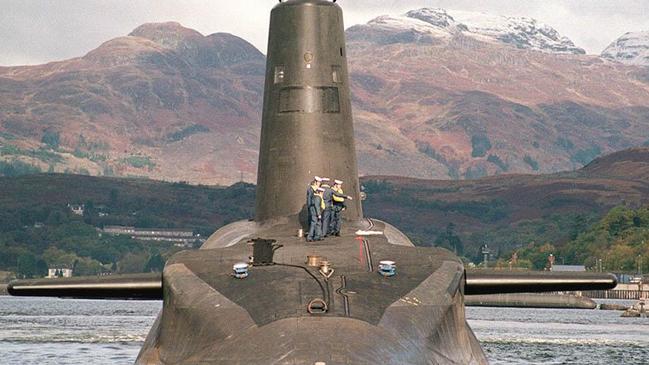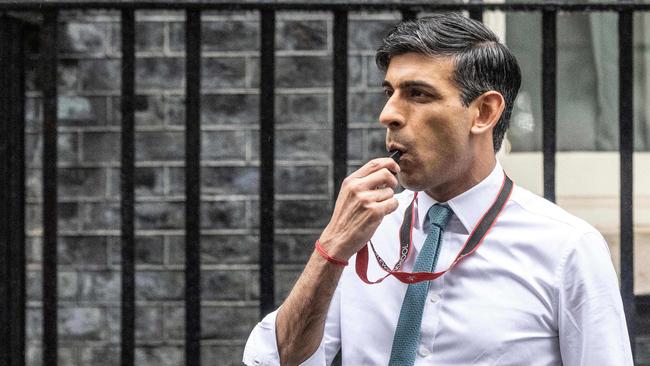Firing up a two-submarine solution in AUKUS nuclear deal
Australia is on course to buy two classes of nuclear submarines under a plan that is likely to cost taxpayers hundreds of billions of dollars and come with massive cost and schedule risk.

Australia is on course to buy not one but two different classes of nuclear submarines under a multistage plan that will fast-track the purchase of up to five US Virginia-class boats before acquiring a fleet of British-designed subs incorporating key American technology.
The leaked plan, revealed in international media reports, is likely to cost Australian taxpayers hundreds of billions of dollars and come with massive cost and schedule risk.
The plan defies Defence’s preference to operate only a single class of a particular capability type to minimise platform costs and complexity.
But it appears to address Australia’s looming submarine “capability gap” through the forward-basing of US submarines in Perth later this decade, and the planned acquisition of at least three Virginia-class boats in the 2030s, with an option to purchase another two.
Anthony Albanese, Joe Biden and British Prime Minister Rishi Sunak will announce the “optimal pathway” for Australia to acquire nuclear-powered submarines on Tuesday (AEDT) in San Diego, in what is being sold as a “genuinely trilateral” plan.
The Prime Minister refused to provide details on the plan on Thursday but vowed that Australia would retain “absolute sovereignty” over its future nuclear submarine fleet, amid concerns the nation wouldn’t have enough qualified submariners to operate the initial US-made boats.

Mr Sunak reportedly told his ministers to expect a positive announcement for Britain, with one senior colleague telling The Guardian: “The deal has definitely gone our way.”
The upcoming announcement will mark the first significant milestone in the 18-month AUKUS partnership, which aims to counter China’s rapidly growing naval capabilities in the Indo-Pacific.
Defence Minister Richard Marles told parliament that building the submarines would be a “massive industrial endeavour” that would create thousands of jobs and help transform the economy.
“It is difficult to overstate the step that, as a nation, we are about to take,” Mr Marles said. “Clearly, these submarines will have the capability to operate at war, but the true intent of this capability is to provide for the stability and for the peace of our region.”
Defence analyst Marcus Hellyer said the reported pathway would involve a high level of duplication, requiring Australia to pour billions of dollars into supporting the Virginia-class boats before switching to a new set of systems.
“We’re going to go through the most difficult capability transition imaginable – from conventional to nuclear – and then we’re going to walk away from one class of boats and do another capability transition to a different nuclear boat,” Dr Hellyer said.
“Why would you do that whole exercise twice?”
South Australian Premier Peter Malinauskas said he wanted a guarantee that the initial “off the shelf” purchase of US submarines would not erode the “cast-iron” commitment to create a sovereign nuclear sub building capacity in Australia.
Mr Malinauskas has also warned future governments against opting to continue to buy more submarines rather than building them here, saying both South Australia and the nation stood to benefit from a domestic naval construction industry.
Reports from The Wall Street Journal and Reuters suggested the AUKUS submarine plan would begin with a step-up in port visits by US submarines, and the rotational deployment of American boats in Australia as early as 2027.
The Virginia-class boats would reportedly be made available from the US, which is already flat out producing submarines for its own defence needs.
It’s unclear whether the boats would be new or used. The Wall Street Journal speculated that Australia might have to invest in new American production facilities, which would be costly and politically difficult given Australia’s future submarines were supposed to be built in Adelaide.
The third stage of the plan would involve the development of a joint Australian-UK boat based on Britain’s planned Astute-class replacement, dubbed SSN(R), as The Australian has flagged in recent reports.

According to The Wall Street Journal, the boats would be manufactured in both Australia and the UK and “would incorporate American technology”.
It’s expected that technology will include a US-designed nuclear reactor, combat system and weapons, ensuring the submarines of all three nations will share key common elements.
This would avoid having to modify a British design for Australia’s use by retrofitting a US combat system, which would have delivered an “orphan” boat that was only operated by Australia.
Speaking in India, Mr Albanese refused to comment on the reports, but belatedly confirmed he would join the US President and Mr Sunak for the AUKUS announcement in San Diego next week.
Pressed on whether Americans could command Australian Virginia-class submarines or if the US would have input over how they were used, the Prime Minister declared that Australia would retain ultimate control over the boats.
“Australia will retain absolutely our sovereignty, our absolute sovereignty,” Mr Albanese said.
“One hundred per cent. It is very important … and that’s something that’s respected by our partners as well.”
The decision to purchase Virginia-class subs is a vindication for Peter Dutton, who revealed last year that he believed as defence minister in the previous Coalition government that the US government would sell Australia two Virginia-class boats off its Connecticut production line by 2030.
But the Opposition Leader was highly critical last week of suggestions Australia could buy a British submarine, saying it would be a mistake.
The future AUKUS boat is likely to be smaller than the larger submarines operated by the US, making them easier to crew.
Britain’s Astute-class has a crew of 98 compared with 135 for the Virginia-class.
But training up enough Australian submariners will still be a massive task. The nation’s Collins-class boats have a crew of 48, and the navy has struggled over decades to build its total submarine force to about 850, which it needs to cover training, deployments and leave.
Accommodating forward-deployed US submarines at Perth’s HMAS Stirling base is likely to require major facility upgrades in the short term, to ensure nuclear safety and accommodate visiting crews.
A senior submarine industry source told The Australian that the deal reflected an unprecedented level of US trust in Australia.
“They are giving us their crown jewels,” the source said.
“They are trusting us with the very same submarine that they use themselves.”
But the complexity of multistage endeavour would be unlike anything Australia had tackled, he warned.
“This is going to be a program that is going to tax us like never before. This is like hosting a series of Olympic Games every year.”







To join the conversation, please log in. Don't have an account? Register
Join the conversation, you are commenting as Logout